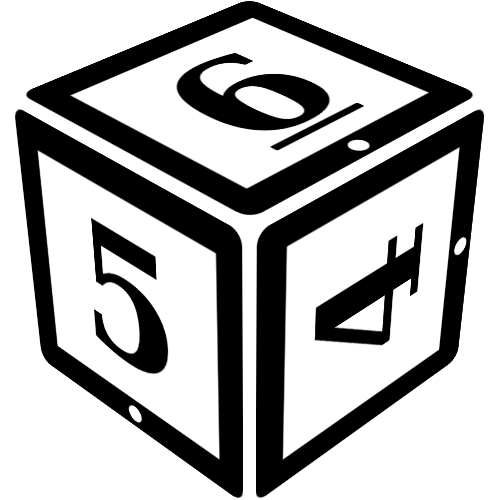
Table of Contents
Books
What books are required to play?
Only the Core Book, Changeling: The Dreaming, 20th Anniversary Edition.
Which books are permitted?
Material from all official C20 books will be accepted during character creation except for what is explicitly forbidden in the posted creation rules. The Storyteller(s) will also draw on this material in creating NPCs and in portraying the world of Changeling. In addition to the core book, this includes Yours to Keep, Book of Freeholds, Kithbook: Boggans, and the Player’s Guide.
What about Radio Free Arcadia titles?
Although Radio Free Arcadia titles come from one or more official C20 writers, they are not official C20 books. While they serve as good inspiration, we will not treat them as canonical here.
Why no older books?
Changeling never had a Revised edition. Many of the books in the game line never even had a second edition version. Materials found in some of the older books are very distant from the rules as we know them today. When it comes to Merits and Flaws, some of the ones from previous editions have been given significantly different costs. Others have the same names but the mechanics are fundamentally different. Also, a huge benefit of the 20th Anniversary editions is their streamlining of the rules. Additional game mechanics spread over dozens of books are unnecessary complications.
Sexuality, Pregnancy, and Mature Play
Are there special rules for pregnancy?
In the Changeling venue, pregnancy storylines are done with the OOC consent of both players. If one player does not wish a pregnancy to occur or if the players cannot agree on the sex of the child or, in the case of a mixed Kith pairing, the heritage of the child, no pregnancy takes place.
What is the policy on adult roleplaying scenarios?
Players may OOC refuse to consent to sexual or romantic involvement with another character regardless of any game mechanics or even magic involved. Even if the scene itself fades to black, roleplaying the aftermath can be deeply upsetting for some players. It is the World of Darkness and darker scenes may be played, but only if both players are interested. We’re all here to have fun.
Please take explicit sexual play private.
Other sorts of mature scenes that do not deal with such potentially sensitive real life issues will come up as the Changelings confront their worst Nightmares. If something is a particularly sensitive issue for a player, please let a Storyteller know ahead of time.
Mechanics
How does the Fae Realm work with different kinds of Gallain?
The books say Fae 4: Elusive Gallain is relative to the caster. Changelings do not need Fae 4 to affect themselves or their own kind. Please note that Eshu do have an affinity for the Fae of their Ancestral Lands, Sidhe of House Balor with the Adhene, and that “stand alone” Western Gallain Kiths largely use the same ratings as the Kithain only counting themselves among the Kiths. While those Fae are rare to the average Kithain, they still tend to exist in Western Kithain society. Below are some of examples of how that works in practice.
For a Boggan:
Fae 1: Boggans, Clurichaun, Eshu, Nockers, Piskies, Pooka, Redcaps, Satyrs, Selkies, Autumn Sidhe, Sluagh, and Trolls, provided none have a Title
Fae 2: Any of the above with a Title and Arcadian Sidhe
Fae 3: Chimera
Fae 4: Thallain, Adhene, Nunnehi, Menehune, Hsien, Inanimae, Ghille Dhu, Korred, Merfolk, Morganed, Oba, River Hags, Wichtel, Wolpertinger, Biloko, Okubeli, Djedi, Kuino, Obambo, Alicanto, Boraro, Encantado, Llorona, Sachamama, Jinn, Spirit Beings, Swan Maidens
Fae 5: Glamour
For an Eshu:
Fae 1: Boggans, Clurichaun, Eshu, Nockers, Piskies, Pooka, Redcaps, Satyrs, Selkies, Autumn Sidhe, Sluagh, Trolls, Jinn, Biloko, Okubeli, Djedi, Kuino, Obambo
Fae 2: Any of the above with a Title, Arcadian Sidhe, and Oba
Fae 3: Chimera
Fae 4: Thallain, Adhene, Nunnehi, Menehune, Hsien, Inanimae, Ghille Dhu, Korred, Merfolk, Morganed, River Hags, Wichtel, Wolpertinger, Alicanto, Boraro, Encantado, Llorona, Sachamama, Spirit Beings, Swan Maidens
Fae 5: Glamour
For an Arcadian Sidhe:
Fae 1: Boggans, Clurichaun, Eshu, Nocker, Piskies, Pooka, Redcaps, Satyrs, Selkies, Autumn Sidhe, Sluagh, and Trolls, provided none have a Title
Fae 2: Any of the above with a Title and Arcadian Sidhe
Fae 3: Chimera
Fae 4: Thallain, Adhene, Nunnehi, Menehune, Hsien, Inanimae, Ghille Dhu, Korred, Merfolk, Morganed, Oba, River Hags, Wichtel, Wolpertinger, Biloko, Okubeli, Djedi, Kuino, Obambo, Alicanto, Boraro, Encantado, Llorona, Sachamama, Jinn, Spirit Beings, Swan Maidens
Fae 5: Glamour
For a Korred:
Fae 1: Boggans, Clurichaun, Eshu, Nocker, Piskies, Pooka, Redcaps, Satyrs, Selkies, Autumn Sidhe, Sluagh, Korred, and Trolls, provided none have a Title
Fae 2: Any of the above with a Title and Arcadian Sidhe
Fae 3: Chimera
Fae 4: Thallain, Adhene, Nunnehi, Menehune, Hsien, Inanimae, Ghille Dhu, Merfolk, Morganed, Oba, River Hags, Wichtel, Wolpertinger, Biloko, Okubeli, Djedi, Kuino, Obambo, Alicanto, Boraro, Encantado, Llorona, Sachamama, Jinn, Spirit Beings, Swan Maidens
Fae 5: Glamour
For an Ifrit:
Fae 1: Ifrit, Lilin, Qareen, Shaytan, and Eshu, provided none have a Title
Fae 2: Any of the above with a Title, Oba, and Arcadian Sidhe
Fae 3: Chimera
Fae 4: Boggans, Clurichaun, Nocker, Piskies, Pooka, Redcaps, Satyrs, Selkies, Autumn Sidhe, Sluagh, Trolls, Thallain, Adhene, Nunnehi, Menehune, Hsien, Inanimae, Ghille Dhu, Merfolk, Morganed, Oba, River Hags, Wichtel, Wolpertinger, Biloko, Okubeli, Djedi, Kuino, Obambo, Alicanto, Boraro, Encantado, Llorona, Sachamama, Spirit Beings, Swan Maidens
Fae 5: Glamour
For a Keremet:
Fae 1: Acheri, Aonides, Fir-bholg, Fuath, Keremet, Moirae, Autumn Sidhe of House Balor, provided none have a Title
Fae 2: Any of the Above with a Title
Fae 3: Chimera
Fae 4: Thallain, Kithain, Nunnehi, Menehune, Hsien, Inanimae, Ghille Dhu, Korred, Merfolk, Morganed, Oba, River Hags, Wichtel, Wolpertinger, Biloko, Okubeli, Djedi, Kuino, Obambo, Alicanto, Boraro, Encantado, Llorona, Sachamama, Jinn, Spirit Beings, Swan Maidens
Fae 5: Glamour
For a Mannikin:
Fae 1: Glomes, Kuberas, Ondines, Parosemes, Solimonds, Mannikins, provided they have no Title
Fae 2: Certain imperial officials with Title or the rare Inanimae to be given it in a Kithain Cpurt
Fae 3: Chimera
Fae 4: Thallain, Kithain, Nunnehi, Menehune, Hsien, Adhene, Ghille Dhu, Korred, Merfolk, Morganed, Oba, River Hags, Wichtel, Wolpertinger, Biloko, Okubeli, Djedi, Kuino, Obambo, Alicanto, Boraro, Encantado, Llorona, Sachamama, Jinn, Spirit Beings, Swan Maidens
Fae 5: Glamour
Policy Explanations
Questions in this section do not deal with the substance of the rules but with the reasoning behind some rules and policies. These are why questions, not how or what questions.
Why can’t I play X?
In coming up with the creation rules, I’ve tried to abide by four basic guidelines.
C20 comes with a massive expansion in playable character types and thus the first guideline is to make sure players are able to experience that. That’s why all the Gallain Kiths which don’t seem too different from mainstream Kithain are allowed. So are the Jinn, the Lycians, the Inanimae, and the handful of Adhene not mortal enemies of Tuathan fae. Kinain are allowed with blood-ties to every allowable changeling Kith and Nobles are allowed to belong to the banner houses of Firinne, Tinean, and Barghest. Seelie and Unseelie are allowed, along with the surface level of the Shadow Court, now presented to most Kithain as a radical populist movement.
The second guideline is to facilitate player characters being able to interact and share adventures. They are the heroes of the story, after all, or at least the protagonists. Yes, it’s also nice to have the intrigue, the political and social struggles, and sometimes even the violence that comes with divided loyalties. Nobles and Commoners don’t always get along and neither do the Courts. Things remain tense between Kithain and Nunnehi. Political struggle is a constant and sometimes gets rough. Still, it should be a story. It shouldn’t be characters who will be in a fight to the death the instant they’re in a room together. That’s why Dauntain are not allowed as player characters. That’s why, even though they have a strong presence in the setting, Thallain and most Adhene are not allowed.
The third guideline is that the game makes sense given the world of Changeling. Yes, Changeling is a game about imagination, but dreams have their own internal logic. Changelings do not abandon their dreams lightly. That’s why new African Kiths tied strongly to specific cultures and places are not allowed. Neither are South American Kiths long separated from Northern fae by a barrier that is still raised every other year or Australian Spirit Beings deeply tied to their own country. River Hags tied to a specific river and Oba who reign in the Eshu Ancestral Lands fall into the same category.
The fourth guideline is to avoid things being too scattered. The conflicts between the Courts, between Nobles and Commoners, and between Kithain and Nunnehi are deeply intertwined and at the core of the game here. The stand alone Gallain Kiths and the Jinn integrate well into this existing conflict and the Inanimae and Lycians make interesting observers from a wholly alien perspective. There is little formal organization between the level of individual Inanimae and the Empire. On the other hand, Hsien would require a whole Dragon Nest to function properly. It would be a largely separate game from the core Changeling game. Hence they are not an option.
What do you mean by the core of the game? How does a Dragon Nest detract any more than the scattered Freeholds mentioned in the setting information?
In terms of actual locations, several Freeholds play a core role. Remembered Dreams is the social center of the local Changeling community, the only Freehold where everyone can easily feel welcome. Lion’s Heart, where Count Dorian holds his court, is the center of Kithain political power in the county. The Oath Grove with its ties to the ancient Grotto that feeds fallen Goblin Town, the dramatic events of its awakening, and its sacred Oaths between Troll, Nunnehi, and Ghille Dhu, is the most powerful and promising of the Freeholds and the one most bound up with the ongoing history of the land. Other Freeholds are central for fae of certain factions. Winter’s Hope is a gathering place for Commoners and Shadow Courtiers fed up with the nobility. Richmond Tavern is a gathering place for the crafters, stronghold of the Nocker guilds, and the site of the county’s Balefire forge. Aside from the Count’s own court, most of the Sidhe of the area reside on Long Island, with the Unseelie gathering in Dragon’s Keep and the Seelie at High Dunes Lodge.
More importantly, certain conflicts and themes are core to the game. Changelings exist at the nexus of Dream, Nightmare, and Banality. This conflict is the smallest, most intimate conflict within every Changeling, aspects of all three being found in every character. They subtly inform the way Changelings interact in the mortal world. They also provide some of the deadliest and most clear-cut enemies of the Kithain: The Thallain and the Dauntain. While these conflicts are core to the very nature of Changeling, others have also played a role through the whole history of the game and give rise to more political and less existential struggles. Nobles and Commoners have struggled for power in Concordia since the Resurgence as have the Courts. Nunnehi have always begrudged their stolen land and those Fae tied to the natural world its destruction.The setting is designed to allow these political conflicts to take on a force of their own.
Everyone has a safe place to go and a way to tie into organized groups. Lion’s Heart has the Court, of course. Oath Grove has the Troll Lodge structure and a formal Nunnehi presence in addition to being a gathering place for a local tragos. Richmond Tavern has the Nocker Bes Din down in the Forge and that Boggan sense of community and hospitality up above. Winter’s Hope is home to radical or merely independent Commoners and Unseelie, including those who embrace the Shadow Court and a notable corby. But all of these groups have connections to one another, even if it’s based in rivalry or even hostility.
A Dragon Nest would largely have its own concerns. It would not compete with other Changelings for the same resources. It would not have historical alliances or rivalries with major Changeling factions. It would be further removed from Kithain society that any other type of Gallain. That said, the Holdings rules do contain a possible exception if there is sustained player interest.
Why is the Parliament of Dreams different than in book X?
For such a big setting element, the Parliament of Dreams is treated extremely inconsistently in different C20 books. It calls for Storyteller discretion. Beyond what’s already been posted about Parliament, there are a lot of interesting concepts in the books. The concept of the High Lords of the Fallen World sitting in an unending deadlock as they rule over all fae or a dream of Commoner self-rule that was reflected in the Dreaming as soon as the Commoners began to step up after the Shattering is a fascinating one, as is the mysterious fifteenth seat and some other ideas. The Dreaming contradicts and the Dreaming has layers.
At a more grounded level, however, I like the idea that, whatever concepts might have always existed in the depths of the Dreaming, David created an institution to help govern his Kingdom with his treaty. I like the idea that he didn’t create an ad hoc compromise between American republicanism and Arcadian absolutism but instead drew on an institution rich in dreams and history and already reflected in federal and provincial governments in the Kingdom of Ice. I like the texture and tradition of Parliament. I like the idea that in the Dreaming, where the Commoners are now represented but there is not yet anything like modern democracy, there still live a lot of old concepts of Parliamentary history, the rotten and pocket buroughs, the representative peers, the university seats, and a whole host of similar things.

